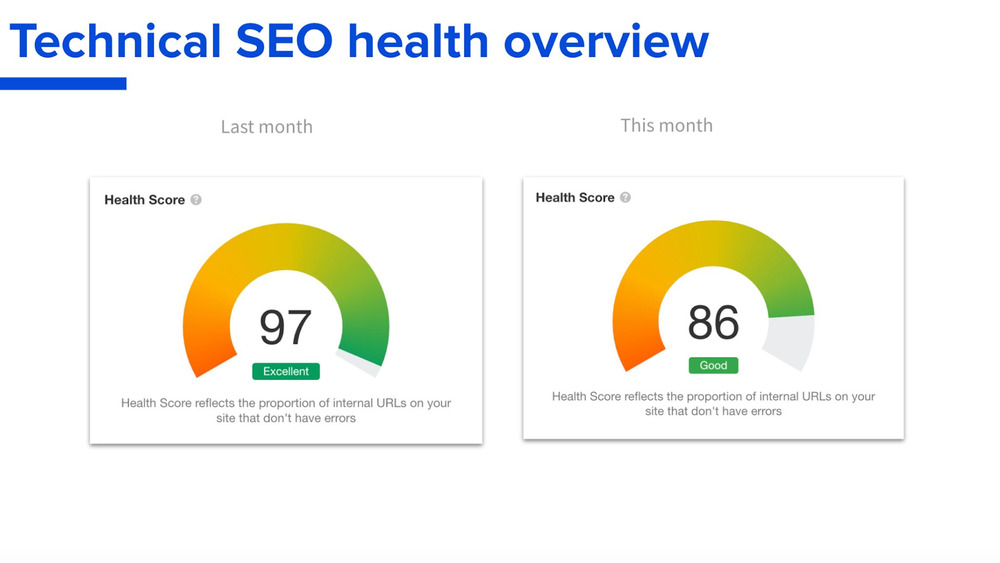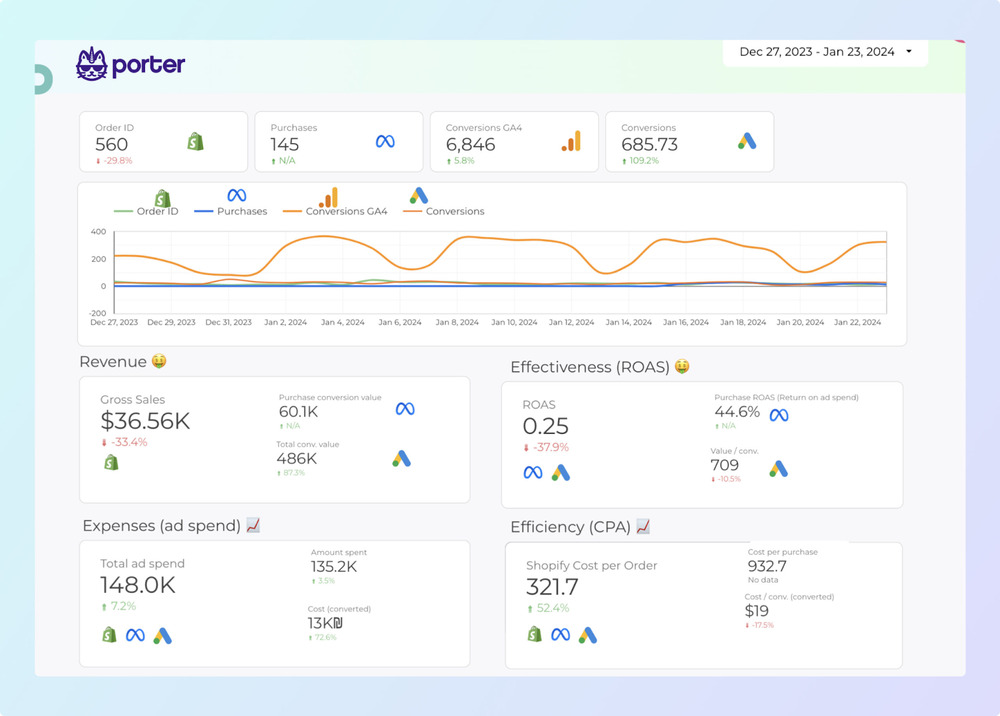A monthly SEO report serves as the compass guiding your digital strategy, turning raw data into meaningful insights.
A structured, thorough checklist helps marketers clearly demonstrate results, align stakeholders, and swiftly adapt to shifting search trends. Effective reporting highlights actionable insights, helping your business quickly identify growth opportunities.
Table of Contents
Key Takeaways
- Monthly SEO reporting provides structure, transparency, and data-driven direction for your digital strategy.
- A complete report should include organic search performance, keyword rankings, backlink activity, top-performing pages, technical health, conversions, and local SEO (if applicable).
- Tools like Google Analytics, Google Search Console, Ahrefs, and Semrush are essential for gathering accurate data.
- Reporting is most valuable when it translates data into insights and next steps, not just numbers.
- Consistency, clarity, and relevance are the foundations of an effective SEO reporting process.
What is Reporting SEO Check For
Monthly SEO reporting provides clear direction by translating data into strategic insights. Here’s what monthly SEO reporting is used for:
| Function | Explanation |
| Track performance over time | Monitor how your site is progressing in organic traffic, rankings, and conversions |
| Elevate ROI | Measure the effectiveness of your SEO efforts in terms of business impact. |
| Spot issues early | Identify drops in performance or technical errors before they escalate |
| Guide decision-making | Use trends and patterns to prioritise the next steps in content, technical fixes, or link building |
| Maintain transparency | Keep stakeholders informed with consistent, easy-to-understand updates |
| Align with business goals | Ensure SEO strategy supports broader marketing and company objectives |
10 Monthly Reporting SEO Checklist
Transparent reporting begins with knowing what matters most. These are the key components every monthly SEO report should cover:
1. Organic Traffic Overview

This section outlines how visitors find your site through organic search and how they behave once they land. Key metrics include sessions, users, new users, bounce rate, and average session duration.
Analysing these month-over-month changes helps uncover trends or performance shifts while segmenting by device, location, or landing pages adds valuable context.
Suggested tool:
Google Analytics / GA4
2. Keyword Rankings

Monitoring keyword rankings shows how well your content is performing in search results. Focus on position changes for your primary and secondary keywords, noting any movement into or out of the top results.
Pay attention to visibility gains, new keyword entries, and shifts in featured snippets or other SERP features. These insights guide which pages to optimise, update, or expand for better search performance.
Suggested tool:
Ahrefs / Semrush / Ubersuggest
3. Backlink Profile

Your backlink profile reflects your site’s authority and credibility. Review new and lost backlinks, referring domains, and changes in domain authority or rating each month.
Evaluate the quality of linking sites and the relevance of anchor text to maintain a healthy, search-friendly profile.
Want to strengthen your backlink profile? Dive into this guide on mastering effective link-building strategies and accelerate your website growth today!
Suggested tool:
Ahrefs / Moz / Semrush
4. Top-Performing Pages

Highlighting your best-performing pages reveals what content resonates most with search users. Start by identifying the pages that brought in the highest volume of organic traffic for the month.
Then, look at which ones contributed to conversions, engagement, or ranking improvements. Patterns in page performance can uncover content types, formats, or topics worth replicating in your future strategy.
Suggested tool:
Google Analytics / GA4
5. Technical SEO Health

A solid technical foundation keeps your site crawlable, indexable, and user-friendly.
This section should cover Core Web Vitals (LCP, FID, CLS), crawl errors, index coverage, and issues like broken links or redirect loops. Addressing these elements consistently improves site performance and search engine visibility.
Suggested tool:
Google Search Console, Screaming Frog, Sitebulb
6. Conversion Metrics

Conversions turn organic visits into measurable business outcomes, directly connecting SEO to revenue or key goals. This part tracks how organic visitors complete targeted actions like form submissions, product purchases, or sign-ups.
Additionally, measuring organic conversion rates and goal completions clearly quantifies SEO’s contribution to overall business performance.
Suggested tool:
Google Analytics / GA4
7. Content Updates & Wins

Summarise new or refreshed content published during the month, highlighting notable gains in rankings, engagement, or conversions.
Include pages with significant performance improvements, capturing insights on what resonated with your audience.
Suggested tool:
Google Analytics / GA4
8. Competitor Insights
Monitoring competitors reveals gaps and opportunities in your strategy. Track changes in their keyword rankings, new content, and backlink acquisitions.
Identify which areas they outperform you such as high-ranking pages or content formats to refine your SEO priorities and stay competitive.
Suggested tool:
Ahrefs / Semrush
9. Local SEO Metrics (If Applicable)

Local search presence relies heavily on how users interact with your business listing. High click-throughs, frequent direction requests, and consistent call volume signal strong visibility.
A rise in positive reviews or higher placement for local keywords further indicates healthy engagement in your target area.
Suggested tool:
Google Business Profile Insights, Local Falcon, Brightlocal
10. Summary & Action Plan
Close the report with a clear breakdown of key observations – what improved, what declined, and what stayed consistent. Then, translate these insights into a focused action plan.
Outline specific next steps such as content updates, technical fixes, or link-building priorities that align with long-term SEO goals.
Suggested tool:
Internal summary + Google Looker Studio (for visuals)
SEO Reporting Best Practices

Follow these best practices to make your SEO reports more impactful:
- Keep it focused
Highlight metrics that align with your client’s or business goals instead of overwhelming them with unnecessary data.
- Use visual aids
Incorporate graphs, charts, and tables to make trends and comparisons easier to digest.
- Maintain consistency
Use a standard monthly report structure and timeline to build familiarity and trust.
- Write for clarity
Avoid jargon and explain metrics in plain language, especially when presenting to non-technical stakeholders.
- Highlight actionable insights
Go beyond reporting numbers—explain what they mean and what should be done next.
- Prioritise relevance over volume
Include only what’s essential to decision-making and strategic planning.
Looking for tools to make your SEO more effective? Explore this curated list of Chrome extensions for SEO that streamline reporting and data analysis.
Conclusion
A well-structured SEO report turns moving parts into a clear monthly narrative. It connects technical checks, content efforts, and performance metrics into one focused view, making it easier to align strategy with outcomes.
Ready to level up your SEO strategy? At Newnormz digital marketing, our SEO team delivers clear, actionable insights that drive measurable growth. Connect with Newnormz today and see how we can amplify your online visibility.






